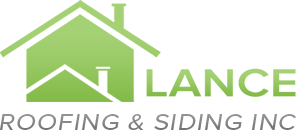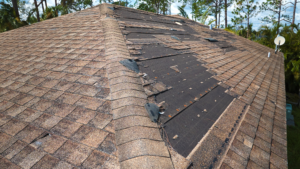Storms in Ohio often wreak havoc, particularly on roofs, one of your home’s most vulnerable parts. Knowing what to do right after a storm is crucial to avoid expensive repairs and keep your home safe. Quick action post-storm is key to protecting your roof and ensuring the overall security of your residence. Today, we are sharing our post-storm roof damage checklist so you know what to look for and when to call for repairs.
When to Inspect Your Roof for Damage:
It’s essential to inspect your roof for damage after specific storm conditions, such as heavy rain, snowfall, or high winds, which are known to stress your roof’s structure. Once the storm has fully passed and it’s safe to venture outside, that’s your cue to assess your roof. Ensure you wait until all severe weather elements, including the risks of lightning and strong winds, have subsided and surfaces are no longer wet or slippery.
The ideal times for this inspection are in the early morning or late afternoon when the lighting conditions are best suited for identifying any damage –make sure to be wary of dew or ice on the roof. These periods provide ample light to spot issues like missing shingles or other impairments that might have occurred during the storm. Prompt inspection after these weather events is vital to maintaining your roof’s integrity and safety, but always have a buddy to spot you while you roam your roof.
Comprehensive Roof Damage Checklist
When assessing your roof for storm damage, it’s crucial to be thorough. Here’s a detailed checklist to guide you:
Shingles: These are your roof’s first line of defense. Carefully examine them for signs of distress. Look specifically for shingles that are missing, cracked, or have started to curl. These defects can allow water to seep in, leading to more severe issues.
Gutters and Downspouts: These components play a vital role in water management for your home. Inspect them for clogs, breaks, or detachment from the roof. Ensure they are clear of debris and securely attached, as blockages or damage can lead to improper water drainage, affecting your home’s foundation and walls.
Flashing: This material is crucial for sealing and protecting the joints around chimneys, vents, and skylights. Check that the flashing is not loose, corroded, or missing, as this can be a common source of leaks.
Attic and Ceilings: Often, roof damage is first noticeable inside the house. Inspect your attic and ceilings for signs of water penetration, such as stains or drips. Early detection of leaks can prevent extensive interior damage.
Debris: Post-storm, it’s common to find debris accumulated on your roof. Clearing branches, leaves, and other debris prevents further damage and ensures water flows freely off your roof.
Regularly using this checklist, especially after severe weather, can help in the early detection of roof issues, preventing escalation into more significant problems.
The Importance of Immediate Repairs
Neglecting roof damage can lead to more severe issues, including leaks, mold, and structural damage. It’s crucial to address any damage immediately to prevent further deterioration. Remember, what might seem like a minor issue can quickly escalate if left unattended.
Do You Have Storm Damage on Your Roof?
If you suspect storm damage to your roof, contact Lance Roofing immediately. Our expert team stands ready to conduct a comprehensive inspection and deliver personalized roofing solutions. We understand the overwhelming nature of post-storm roof damage, but with Lance Roofing, you’re not alone. We are dedicated to preserving the safety and integrity of your home’s roof. By choosing us for your roofing needs, you ensure your home remains secure regardless of weather conditions. Call us today for all your roofing concerns, and let us assist in safeguarding your home.


